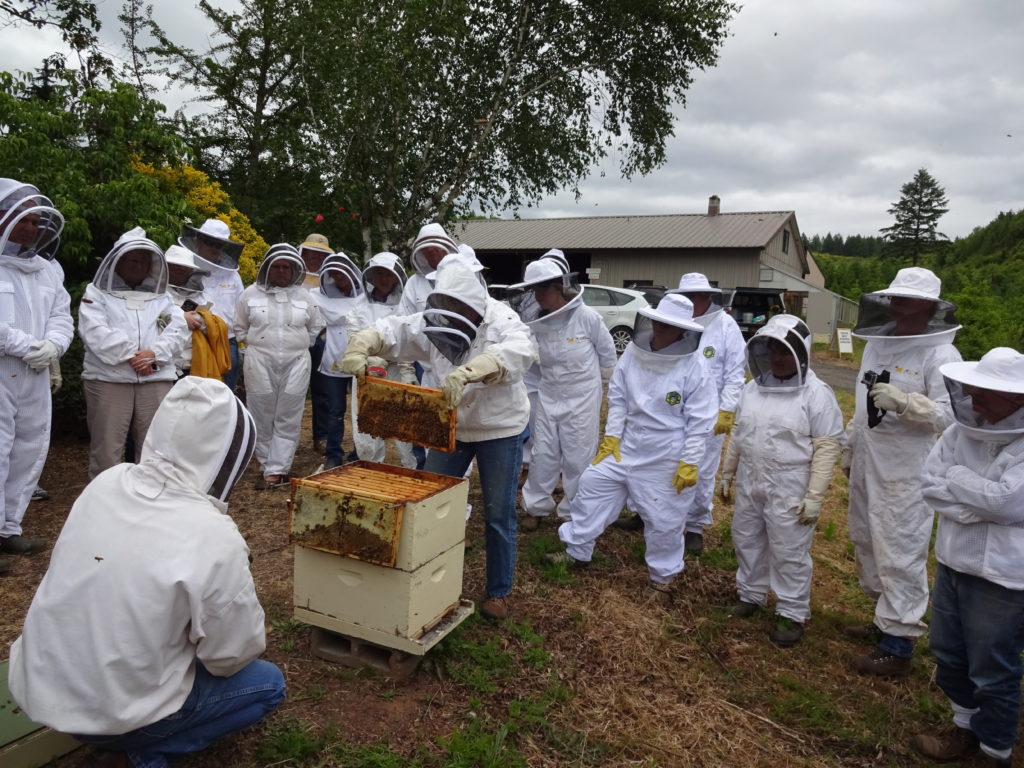The Honey Bee Health Coalition has developed two new resources for beekeepers — a best practices guide for hive health and a decision support tool for taking on the honey bees most dangerous parasite.
An expert team of beekeepers, entomologists, extension and regulatory agents, bee suppliers and apiary inspectors produced and reviewed Best Management Practices for Hive Health: A Guide for Beekeepers.
The Coalition contracted Dewey Caron, emeritus professor of Entomology and Wildlife Ecology at the University of Delaware and Affiliate Professor at Oregon State University’s horticulture department, to draft the 80-page guide, available for free download at honeybeehealthcoalition.org/hivehealthbmps.
“The guide includes information about safety considerations, apiary setup and maintenance, pesticide exposure, pests and diseases, queens and nutrition,” Caron said. “These best management practices will be updated periodically to ensure beekeepers have access to the best possible resources and strategies.”
American Honey Producers Association vice president Chris Hiatt praised the guide.
“Learning and understanding these techniques is vital for beekeepers, and there is a lot of questionable information out there that’s not based on the latest best practices,” Hiatt said. “The guide both promotes in-hive practices that strengthen bee populations and encourages beekeepers to communicate and work with farmers and landowners to improve bee health.”
Kentucky state apiarist Tammy Horn Potter said, “These best practices will help beekeepers — from hobbyists to commercial — establish and maintain the conditions necessary for healthy colonies. The guide is full of helpful photos and graphics, and the Key Points to Remember summary following each chapter will especially benefit new and small-scale beekeepers.”
The Coalition also launched a new free, mobile-friendly tool to accompany its Tools for Varroa Management. The Varroa Tools, also drafted by Dewey, was first released in 2015; Dewey has revised it and is now in its seventh edition. The manual helps beekeepers implement practical, effective techniques to control Varroa mites, one of the honey bees most destructive pests.
“The Varroa guide is downloaded thousands of times every month, but in talking to beekeepers, we find many are still confused about navigating which treatments are right for their situation and conditions,” said Mary Reed, Texas Apiary Inspection Service chief apiary inspector. “With this new tool, they can input their hive conditions and management preferences and receive a list of management techniques and treatment options that fit. They can then study their options using the provided information and videos before making a decision.” The tool can be found at honeybeehealthcoalition.org/varroatool.
“The tool asks beekeepers five basic questions and has links to background information if individuals are unsure of their answers,” Caron said. “The tool and the full download recommends that beekeepers regularly monitor and manage Varroa mites
The Coalition, a diverse group of nearly 50 organizations working to improve the health of honey bees and other pollinators in the context of production agriculture, announced both new resources at annual meetings of the American Beekeeping Federation and American Honey Producers Association. Dewey represents WAS as a Coalition member and along with Paul Andersen represented OSBA (when they were a member.)
Bee Day in Jeff Clark’s North Plains Apiary Tualatin Valley Beekeepers Association – one of several of Dewey’s photos used

